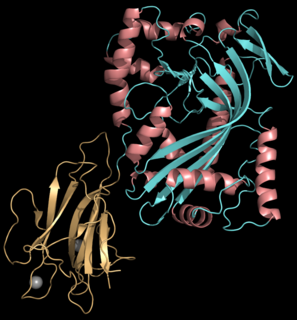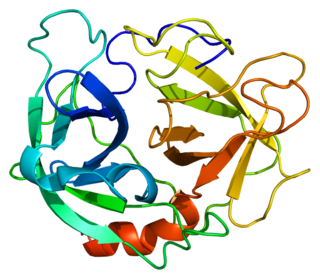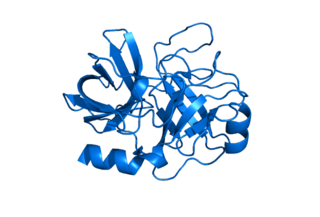| GZMH | |||||||||||||||||||||||||||||||||||||||||||||||||||
|---|---|---|---|---|---|---|---|---|---|---|---|---|---|---|---|---|---|---|---|---|---|---|---|---|---|---|---|---|---|---|---|---|---|---|---|---|---|---|---|---|---|---|---|---|---|---|---|---|---|---|---|
| |||||||||||||||||||||||||||||||||||||||||||||||||||
| Identifiers | |||||||||||||||||||||||||||||||||||||||||||||||||||
| Aliases | GZMH , CCP-X, CGL-2, CSP-C, CTLA1, CTSGL2, granzyme H | ||||||||||||||||||||||||||||||||||||||||||||||||||
| External IDs | OMIM: 116831 MGI: 109254 HomoloGene: 133275 GeneCards: GZMH | ||||||||||||||||||||||||||||||||||||||||||||||||||
| |||||||||||||||||||||||||||||||||||||||||||||||||||
| |||||||||||||||||||||||||||||||||||||||||||||||||||
| |||||||||||||||||||||||||||||||||||||||||||||||||||
| |||||||||||||||||||||||||||||||||||||||||||||||||||
| |||||||||||||||||||||||||||||||||||||||||||||||||||
| Wikidata | |||||||||||||||||||||||||||||||||||||||||||||||||||
| |||||||||||||||||||||||||||||||||||||||||||||||||||
Granzyme H is a protein that in humans is encoded by the GZMH gene. [5] [6]
| GZMH | |||||||||||||||||||||||||||||||||||||||||||||||||||
|---|---|---|---|---|---|---|---|---|---|---|---|---|---|---|---|---|---|---|---|---|---|---|---|---|---|---|---|---|---|---|---|---|---|---|---|---|---|---|---|---|---|---|---|---|---|---|---|---|---|---|---|
| |||||||||||||||||||||||||||||||||||||||||||||||||||
| Identifiers | |||||||||||||||||||||||||||||||||||||||||||||||||||
| Aliases | GZMH , CCP-X, CGL-2, CSP-C, CTLA1, CTSGL2, granzyme H | ||||||||||||||||||||||||||||||||||||||||||||||||||
| External IDs | OMIM: 116831 MGI: 109254 HomoloGene: 133275 GeneCards: GZMH | ||||||||||||||||||||||||||||||||||||||||||||||||||
| |||||||||||||||||||||||||||||||||||||||||||||||||||
| |||||||||||||||||||||||||||||||||||||||||||||||||||
| |||||||||||||||||||||||||||||||||||||||||||||||||||
| |||||||||||||||||||||||||||||||||||||||||||||||||||
| |||||||||||||||||||||||||||||||||||||||||||||||||||
| Wikidata | |||||||||||||||||||||||||||||||||||||||||||||||||||
| |||||||||||||||||||||||||||||||||||||||||||||||||||
Granzyme H is a protein that in humans is encoded by the GZMH gene. [5] [6]

Perforin-1 is a protein that in humans is encoded by the PRF1 gene and the Prf1 gene in mice.
Granzyme B (GrB) is one of the serine protease granzymes most commonly found in the granules of natural killer cells and cytotoxic T cells. It is secreted by these cells along with the pore forming protein perforin to mediate apoptosis in target cells.

Granzyme A is an enzyme. that in humans is encoded by the GZMA gene, and is one of the five granzymes encoded in the human genome. This enzyme is present in cytotoxic T lymphocyte granules.

Neutrophil elastase is a serine proteinase in the same family as chymotrypsin and has broad substrate specificity. Neutrophil elastase is secreted by neutrophils during inflammation, and destroys bacteria and host tissue. It also localizes to neutrophil extracellular traps (NETs), via its high affinity for DNA, an unusual property for serine proteases.

Cathepsin G is a protein that in humans is encoded by the CTSG gene. It is one of the three serine proteases of the chymotrypsin family that are stored in the azurophil granules, and also a member of the peptidase S1 protein family. Cathepsin G plays an important role in eliminating intracellular pathogens and breaking down tissues at inflammatory sites, as well as in anti-inflammatory response.

Granzyme B is a serine protease that in humans is encoded by the GZMB gene. Granzyme B is expressed by cytotoxic T lymphocytes (CTL) and natural killer (NK) cells.

Caspase-10 is an enzyme that, in humans, is encoded by the CASP10 gene.

Tryptase alpha-1 and tryptase beta-1 are enzymes that in humans are encoded by the same TPSAB1 gene. Beta tryptases appear to be the main isoenzymes expressed in mast cells; whereas in basophils, alpha tryptases predominate.

Suppressor of tumorigenicity 14 protein, also known as matriptase, is a protein that in humans is encoded by the ST14 gene. ST14 orthologs have been identified in most mammals for which complete genome data are available.

Kallikrein-10 is a protein that in humans is encoded by the KLK10 gene.

Serglycin, also known as hematopoietic proteoglycan core protein or secretory granule proteoglycan core protein, is a protein that in humans is encoded by the SRGN gene. It is primarily expressed in hematopoietic cells and endothelial cells, and is the only known intracellular proteoglycan.

Kallikrein-related peptidase 4 is a protein which in humans is encoded by the KLK4 gene.

Serpin B9 is a protein that in humans is encoded by the SERPINB9 gene. PI9 belongs to the large superfamily of serine proteinase inhibitors (serpins), which bind to and inactivate serine proteinases. These interactions are involved in many cellular processes, including coagulation, fibrinolysis, complement fixation, matrix remodeling, and apoptosis .[supplied by OMIM]

Hyaluronan-binding protein 2 also known as factor VII activating protease (FSAP) is a protein that in humans is encoded by the HABP2 gene.

Hepatocyte growth factor activator is a protein that in humans is encoded by the HGFAC gene.

Kallikrein-8 is a protein that in humans is encoded by the KLK8 gene.

Granzyme K is a protein that in humans is encoded by the GZMK gene.

Granzyme M is a protein that in humans is encoded by the GZMM gene.

Serpin A9 also known as centerin or GCET1 is a protein that in humans is encoded by the SERPINA9 gene located on chromosome 14q32.1. Serpin A9 is a member of the serpin family of serine protease inhibitors.

Brain-specific serine protease 4 (BSSP-4), also known as serine protease 22 or tryptase epsilon, is an enzyme that in humans is encoded by the PRSS22 gene.